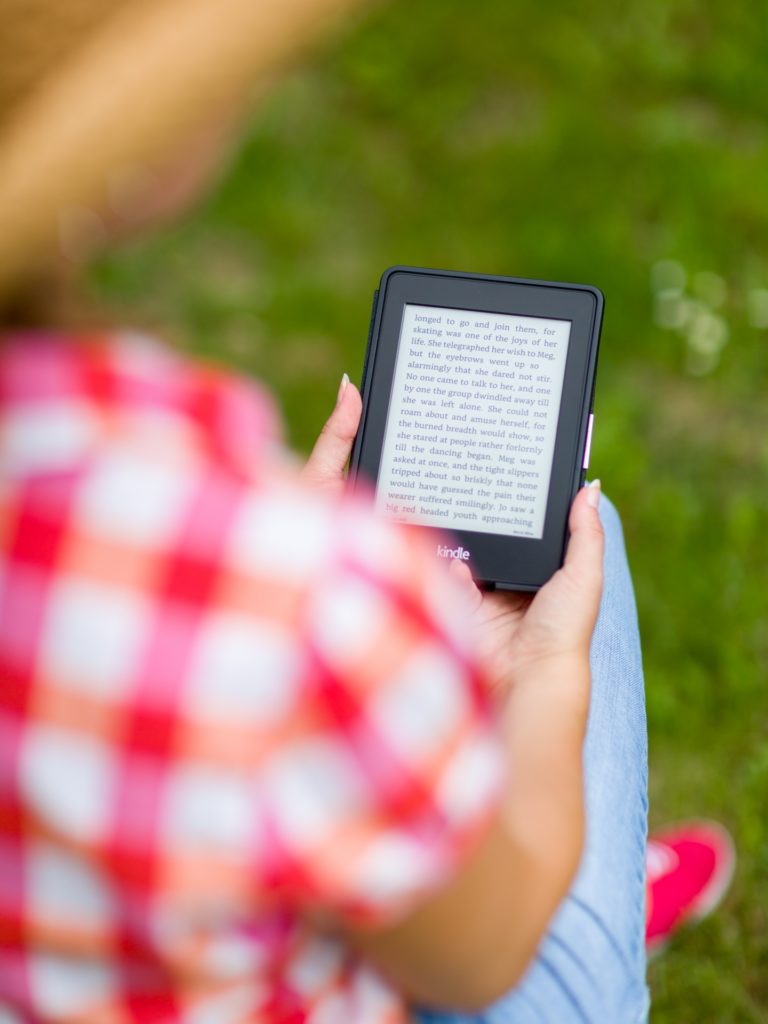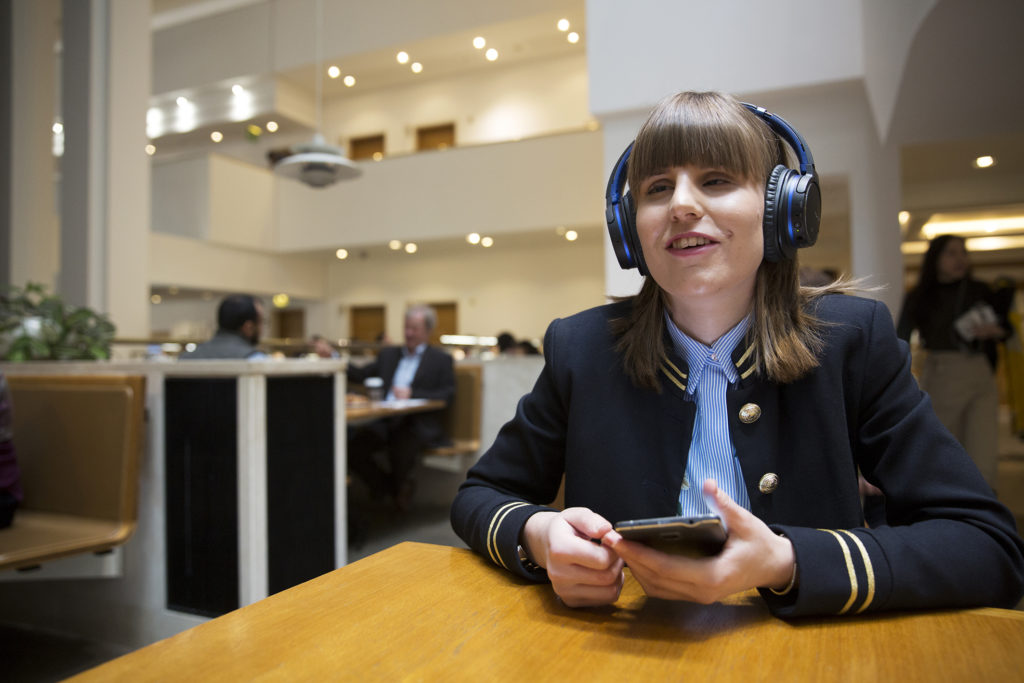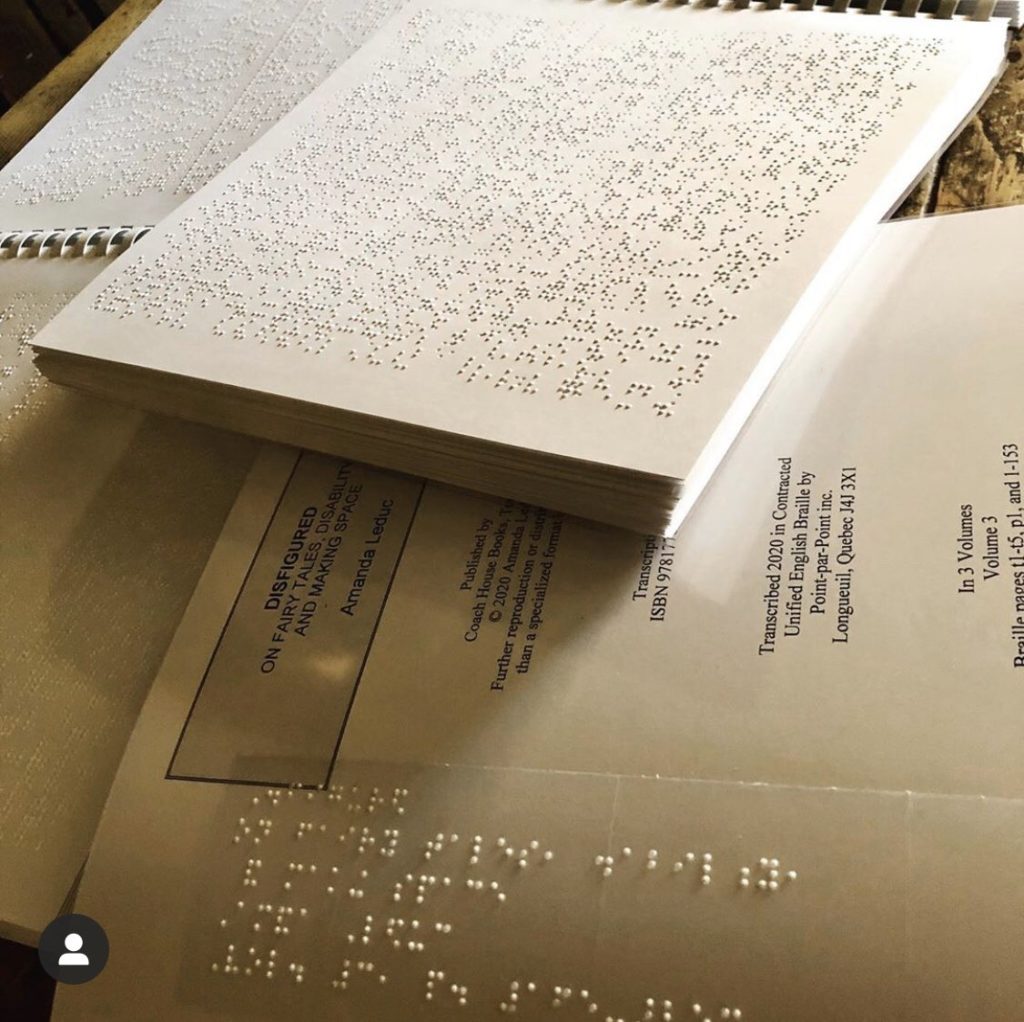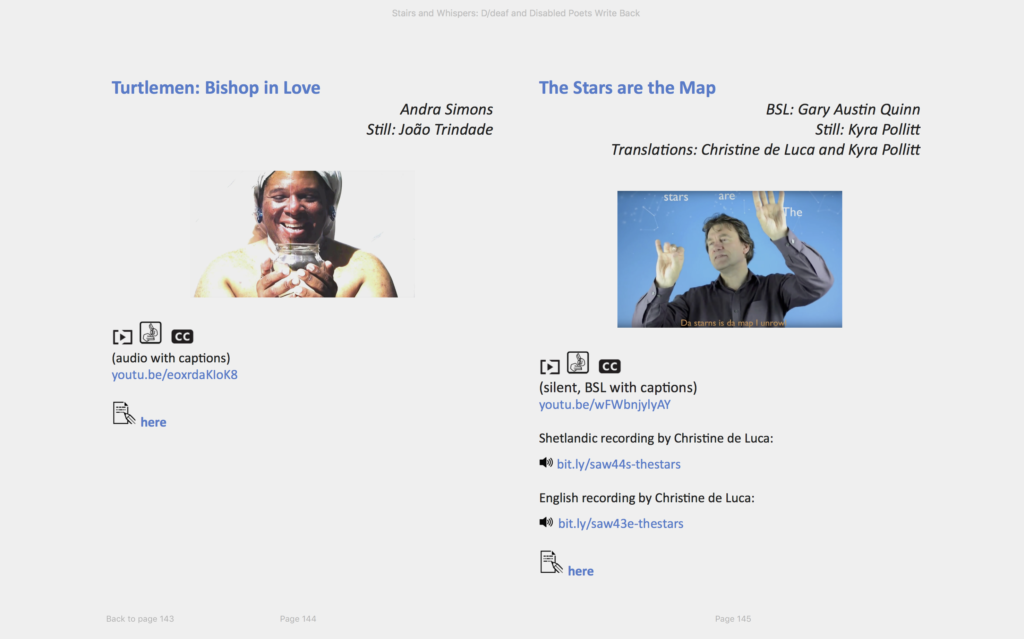Sandra Alland, co-editor of Stairs and Whispers: D/deaf and Disabled Poets Write Back (Nine Arches Press, 2017), explores the accessibility on offer for disabled audiences within the publishing industry.

Braille has been around for 200 years, and audiobooks for almost 100 – though neither was widely available until recently. ‘Expanded’ books on CD-ROM made their debut just 35 years ago, and e-readers have existed since 1998 . But digital publications only really took off with Amazon’s 2007 Kindle. Later, Amazon, Apple, Google and others began mass-selling e-books, e-readers, and audio recordings and platforms.
In the past decade we’ve witnessed a sudden jump in various kinds of widely-produced ‘accessible’ books. But how many books include sign languages, easy-read versions, or descriptions of images? How many are easily or affordably available as e-books, audiobooks, Braille or large print? And, as buying or accessing multiple kinds of books online becomes commonplace, can we ignore that disabled people make up 56% of internet non-users in the UK?
EPUBs and other e-books
An EPUB is a digital book, encoded in an HTML file that carries text and images. EPUBS are optimised for most e-readers, tablets, smartphones, computers and screen readers. The EPUB format has been the official standard of the International Digital Publishing Forum since 2007; currently the best version is ‘EPUB 3’.
There are many access benefits to digital reading for blind readers, as well as for people who have Cerebral Palsy or ME, or are dyslexic or neurodivergent. E-readers are light, and eliminate the need to hold or turn pages. Digital books have adjustable font size and brightness, and are sometimes compatible with screen readers and digital Braille. EPUBs offer clickable links to external websites, internal links to/from endnotes and tables of contents, and the possibility for multimedia usage. And most e-books are cheaper than their print counterparts.
From surveying six large UK publisher websites (Penguin Random House, Hachette, HarperCollins, Pan Macmillan, Simon & Schuster and Oxford University Press), it’s clear that corporate and large publishers offer e-books for most new titles. In the United States and worldwide, corporate publishers are mainly comprised of affiliated companies, and therefore have similarly accessible approaches to e-books. It’s notable, though, that just two-thirds of websites I viewed have accessibility sections. Further, the majority only sell e-books via online distributors like Kindle or iBooks, which disadvantages offline and independent distribution – and means you usually don’t own the books you buy.
SAGE is a large U.S. academic indie, whose comprehensive e-book access page describes the benefits of EPUB 3, and a commitment to supplying digital copies of virtually all books. Like the corporate publishers above, SAGE is notably affiliated with member-based programmes like AccessText Network, RNIB Bookshare, and Accessible Books Consortium. Though these memberships are restricted, they offer readers cheaper access.
Moving away from large publishers to smaller independents, things become muddied. Most contemporary poets are published by small presses, and disabled and other marginalised writers are more likely to find publication through this route. But disabled readers who want to access such work face more barriers.
In a survey of 25 independent publishers in England, Scotland and Canada, I found that none have access sections on their websites. While many UK presses offer no e-books, a few have them available through Amazon. Mid-sized and larger indies, like Manchester’s Comma Press and Edinburgh’s Canongate, seem to produce e-books for all new titles. But the only independent I came across that offers e-books from their own site is Salt Publishing.
In contrast to this, while still having no access information, small and independent Canadian publishers seem more likely to have EPUB versions – including poetry. It’s also more common to produce e-books in-house in Canada, and a good number of independents even offer direct downloads. Things do vary across publishers and regions, and the smallest seem to lack adequate resources. But Jay MillAr, of the small indie Book*hug, tells me that most of his Toronto colleagues are producing e-books simultaneously with print versions, and that funders are pushing in the direction of accessibility.
MillAr also has interesting commentary about the cost of making e-books: “It isn’t too expensive. We work with a professional converter who takes the design files and produces our e-books. It’s about an additional $300 – on top of everything else we invest in the publication process – to convert and warehouse/distribute an e-book.”

Audiobooks
According to a 2018 Guardian article, audiobook sales more than doubled between 2013 and 2018, although the writer describes the increase as being about the popularity of spoken word – and does not even mention access. But recorded readings of books are a lifeline for a wide range of disabled people who find printed materials inaccessible.
Audiobooks are mostly available through streaming sites, or downloadable via online distributors like Kobo and Amazon’s Audible. Similarly to what I found with e-books, large publishers now supply audiobooks for most titles. Some, like Hachette and Macmillan, have their own audiobook imprints. But none sell directly.
In stark contrast to e-books, audiobooks are almost non-existent in the independent or small publishing world, likely due to cost. But English independent Bolinda Publishing is dedicated solely to audiobook sales. And one larger Scottish standout is again Canongate, whose ability to offer audio downloads for most of their 2020 catalogue likely stems from a combination of larger resources and their 2010 acquisition of audiobooks specialist CSA Word.
Yet even publishers who sell audiobooks don’t signpost them on their websites, including on the rare occasions when they’re produced in-house. The UK norm is to offer no titles, or the occasional one-off. Often, audio versions seem to happen as a result of pressure from disabled writers and editors, or audiences of particular books, and aren’t pursued for other titles.
There’s a similar lack in Canada, though again more independent funding initiatives than in England and Scotland. There’s also an interesting focus on authors reading their own work (audiobooks are not generally recorded by the original writers), including Book*hug’s tiny but fast-growing list funded by Heritage Canada.
When available, audiobooks tend to be expensive. Direct downloads from Canadian indies are $10 above paperback prices, and Audible’s minimum monthly fee is £7.99. As an alternative, UK charity Listening Books provides ‘individuals with print impairments’ access to over 8,000 audiobooks. Membership to their library service, which is notably both online and postal, starts from as little as £20 per year.
RNIB‘s ‘Talking Books’ significantly includes Digital Accessible Information System (DAISY) audio versions, a rarer and more disability-friendly form of audiobook. DAISY is ‘loaded with chapters and sections so that members can jump around the text at will’.

Braille, digital Braille and large print
Most print and e-books are usually not translated into Braille. But RNIB, the biggest publisher of Braille translations, offers over 60,000 titles to their members for lending and sometimes purchase.
RNIB’s Bookshare scheme enables e-books to be read aloud or enlarged to large print by screen readers, and in some cases translated into digital Braille with additional equipment. UK member organisations can access a large database of books, as almost all large publishers (but few independents) are part of this or similar schemes.

While Penguin Random House, HarperCollins and Simon & Schuster have their own large print collections, both Braille and large print are again infrequently offered in independent publishing. Things seem to be gaining some traction in Canada, though. Mid-size indie House of Anansi committed to translating the 2019 Griffin Poetry Prize winners into both digital and print Braille. And, impressively, Coach House Books recently published Amanda Leduc’s Disfigured: On Fairy Tales, Disability and Making Space as paperback, audiobook, PDF and EPUB. Leduc and Coach House also ensured it’s available as e-Braille, print Braille and DAISY audio, thanks to a partnership with the Centre for Equitable Library Access and the National Network for Equitable Library Service.
Integrated and unusual access
Many publishers might not offer access because of budget limitations or not prioritising disabled readers – but disabled-led projects often position access as necessity. And where non-disabled publishers might view e-books and audiobooks as simply other formats in which to sell a standard product, disabled people are re-imagining the very form of books.
A small example of an experimental UK publication is the anthology I co-edited in 2017 with Khairani Barokka and Daniel Sluman, Stairs and Whispers: D/deaf and Disabled Poets Write Back. I collected audio content from 50 contributors, and curated ten captioned video-poems (four in British Sign Language). Barokka and I wrote alt-text descriptions of visuals. In the paperback, access URLs are printed next to each poem, essay and photograph. In the e-book, you can click links to audio or video versions while reading. But, although extensive, much of the book’s access is only available via YouTube or SoundCloud.

Stairs and Whispers’ accessibility exists because many disabled people volunteered time beyond their payment, and because three disabled co-editors found a publisher willing to produce a digital version close to what we envisioned. Like many UK poetry presses, Nine Arches has yet to produce e-books as part of regular publishing – but the low-budget Stairs and Whispers evokes exciting possibilities for the format.
Over in California, editor Alice Wong is set to release her second collection of essays by and about disabled people on 30th June, Disability Visibility: First Person Stories from the 21st Century. Vintage Books will publish it as e-book, audiobook and paperback. To increase access, Wong is commissioning a disabled writer to write a plain language version for free download from her website.
She tells me, “I may not get another opportunity like this, so I want it to reach as many people and make it as accessible as possible. Another disabled writer is writing a discussion guide that will be on my website for download as well. I want to offer these two free things because not everyone can afford a book either, which is another access consideration important to me.”
While Disability Visibility is with a large publisher, Alice’s previous collection is self-published and has less ‘professional’ but excellently-integrated access. Resistance and Hope: Essays by Disabled People has free text and audio versions downloadable to own, both with an image description of the book’s cover. The mp3 is accompanied by a document detailing timestamps for the purpose of fast-forwarding to specific essays.
This last detail is vital, as having audio and text at the same time is something many disabled people need. The current model of having to choose between print, audiobook and e-book doesn’t allow for simultaneous listening and reading, switching back and forth when tired, or multimedia creativity. As these examples demonstrate, some of the most thoughtful or unusual ideas come from disabled people ourselves.
Things have definitely improved for book access in the past decade. But I can’t wait to see what disabled folk come up with when consulted in the decision-making of larger publishers – or given proper indie funding to provide the imaginative access we’re best-positioned to design.

